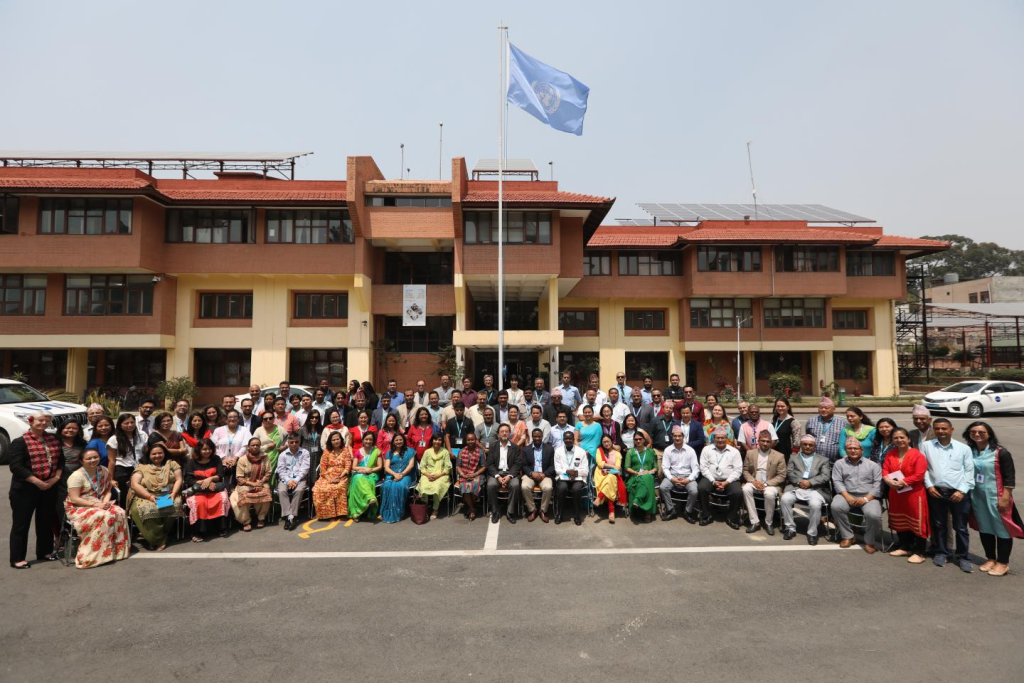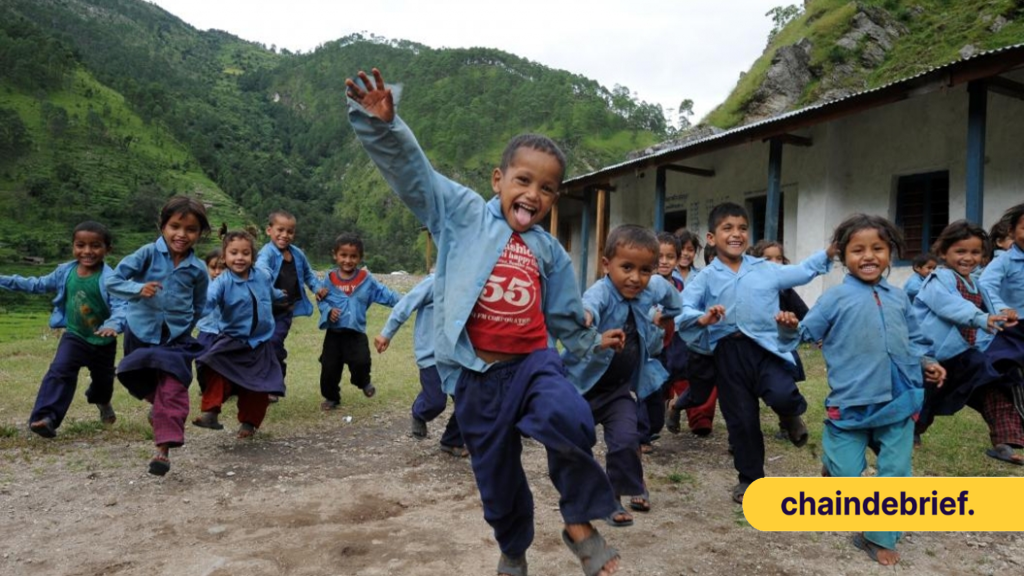You are in a remote mountainous village in northern Nepal. Essential services like health, education, and water are unreliable and rarely available to the sherpa community which has so lovingly been hosting you for the past few months.

Being a visionary, you have a brilliant idea for a mobile app that could improve your community’s access to these services.
You have the skills and passion but lack the resources and support to bring it to life.
Now imagine there is a way for you to join a global network of people who share your vision and values, and who are willing to help you turn your idea into reality. A network that operates on a decentralised platform that uses blockchain technology and cryptocurrencies to ensure transparency, accountability and sustainability.
Luckily, you have been reading ChainDebrief, and have become knowledgeable in the wild west of technology; Web3You realise that there is a solution to your problem; DAOs.
If you are currently a bit confused, dear reader, and you are wondering how a decentralised, blockchain-based global community network helps you achieve your humanitarian vision, continue reading.
In this article, we’ll delve deeper into how DAOs can revolutionise humanitarian aid and development by empowering local communities to co-create solutions.
We’ll also discuss how UNICEF is experimenting with a DAO prototype to support digital public goods that benefit children and communities worldwide.
Also Read: Polygon’s zk IDs: The Solution To a Web3 Identity?
Empowering Communities through DAOs
The spheres of humanitarian aid and development have always aimed to be massive powers of good for the global human community.Unfortunately, various hurdles, including red tape, dishonest practices, inefficiency, and reliance on benefactors, often hold back the sectors’ effectiveness.
Enter Decentralised Autonomous Organizations (DAOs), which offer a fresh way to manage and deliver humanitarian aid and development projects.
Grounded in decentralisation, self-governance, and autonomy, DAOs pave the way for more open, democratic, and lasting governance of humanitarian efforts. Through blockchain-based smart contracts and digital tokens, DAOs facilitate collaboration among a network of contributors.
Furthermore, DAOs give affected individuals a greater say in the planning, execution, and assessment of initiatives that impact them.
The Sh*t They Never Taught You About DAOs.
— Andy (@andymewborn) November 29, 2021
Why the heck didn't someone tell us about this sooner?
• What is a DAO?
• What are the benefits of a DAO?
• What are the downsides of a DAO?
Let's dive in.
DAOs, 101 in plain English 🧵👇 pic.twitter.com/5WPDBgJ4vU
They let these communities propose, back, and carry out projects that positively impact both themselves and others in similar situations. Additionally, DAOs provide a medium for communities to share feedback and support fellow network members.
By leveraging the power of blockchain technology and digital currencies, DAOs decentralise funding sources and project sustainability.
The distributed ledger of blockchain ensures secure, verifiable, and unchangeable transaction records, while digital currencies enable direct transactions between parties without intermediaries.
DAOs also foster collaboration and innovation across multiple humanitarian aid and development stakeholders by using decentralised platforms and networks to exchange resources and knowledge.
Decentralised platforms let users communicate directly with each other, bypassing middlemen, while decentralised networks feature nodes that cooperate and share information without central control.
Though DAOs have the potential to reshape humanitarian aid and development, they come with their own set of challenges and limitations, such as scalability, security, legal considerations, and ethical concerns. To guarantee that DAOs work for the public good and uphold human rights, they must be carefully designed, implemented, and regulated.
Despite these obstacles, DAOs present an exciting alternative to conventional humanitarian aid and development approaches. This has not gone unnoticed, and recently arguably the most well known humanitarian organization has launched an experiment to materialise these benefits on the largest scale seen yet.
Enter UNICEF.
UNICEF’s Exploration of DAOs for Humanitarian Aid
UNICEF, the renowned United Nations agency for children, is not only a humanitarian organization but also a trailblazer in the realm of innovation. By working in over 190 countries, they strive to provide assistance to children and their families while upholding children’s rights across the globe.

Since 2016, UNICEF has been experimenting with blockchain technology and cryptocurrencies through its Innovation Fund, which invests in startups that apply cutting-edge technologies to address challenges faced by children. In 2019, UNICEF further expanded its innovative efforts with the CryptoFund, receiving bitcoin and ether donations to invest in child-focused startups. This CryptoFund is an integral part of UNICEF’s broader venture strategy to discover, support, and scale solutions that can positively impact children’s lives.
Digital Public Goods (DPGs) have become a primary focus for UNICEF’s venture initiatives. DPGs, encompassing open-source software, models, and standards, enable countries to establish digital infrastructure as a viable alternative to proprietary solutions.
By doing so, DPGs facilitate access to vital services such as information, education, health, and finance for millions currently underserved by the digital economy.
Pondering if international orgs will adopt DAO governance models in the future? Good news! @UNICEF is exploring a Digital Public Goods DAO, built on @0xPolygonLabs, for enhanced stakeholder communication in international development. https://t.co/ChRxgyhjOL
— Impact Plus (@ImpactPlus_Web3) April 10, 2023
UNICEF recognizes the potential of DPGs in achieving the Sustainable Development Goals (SDGs) – a set of 17 global objectives aimed at eradicating poverty, safeguarding the planet, and ensuring peace and prosperity for all by 2030. As a founding member of the Digital Public Goods Alliance (DPGA), UNICEF actively identifies, supports, and scales DPGs that align with the SDGs.
Nevertheless, supporting DPGs is no easy feat. Challenges such as inadequate funding, limited visibility, lack of coordination, governance issues, and sustainability concerns persist. Furthermore, DPGs often rely on voluntary contributions from developers and donors with varying interests and motivations, and struggle to engage with diverse end-users and stakeholders.
This is where UNICEF envisions DAOs playing a significant role.
They are currently testing a DAO prototype on Polygon, a layer 2 solution that enhances Ethereum transactions’ speed and affordability.
The DAO prototype aims to refine communication and decision-making for a DPG project named Rumsan, supported by UNICEF’s CryptoFund. Rumsan is a blockchain-powered cash and voucher assistance platform connecting aid agencies with distribution entities to provide aid for beneficiaries in Nepal.
The DAO prototype enables Rumsan team members to propose, vote, and fund new features or improvements using tokens representing their stake and influence. These tokens, minted and distributed by UNICEF based on each member’s contributions and performance, can also incentivize other participants like developers, testers, or users who join the DAO and offer feedback or assistance.
While still in its developmental and testing stages, the DAO prototype isn’t fully functional or available to the public.
However, UNICEF is hopeful that this prototype will showcase the advantages of using DAOs to support DPGs and inspire other projects to adopt similar models.
UNICEF envisions a network of DAOs supporting various DPGs aligned with the SDGs, benefiting children and communities worldwide. They believe that DAOs can foster fair, inclusive, and participatory governance of DPGs, and promote a collaborative and innovative culture among stakeholders.
Connecting the Nepal Anecdote and the Future of DAOs
Back in Nepal, you smile at the realisation that a DAO can help you provide the necessary resources and support for implementing your mobile app idea. You are filled with excitement at the realisation that you can change the life of your newly found friends.

By enabling decentralized governance, funding, and collaboration, DAOs can empower communities like the one in the Nepalese village, leading to sustainable solutions for improving the quality of essential services.
UNICEF’s experimentation with DAOs to support DPGs offers a glimpse into the future of humanitarian aid and development.
As more organisations and communities explore and adopt DAOs, we can expect a more inclusive and innovative approach to tackling global challenges and making a difference in the lives of those who need it most.
Also Read: A Cross-Chain Future? Learning Lessons From History’s Global Superpowers
[Editor’s Note: This article does not represent financial advice. Please do your own research before investing.]
Featured Image Credit: Unicef
This article was written by Harry Vellios and edited by Yusoff Kim



































